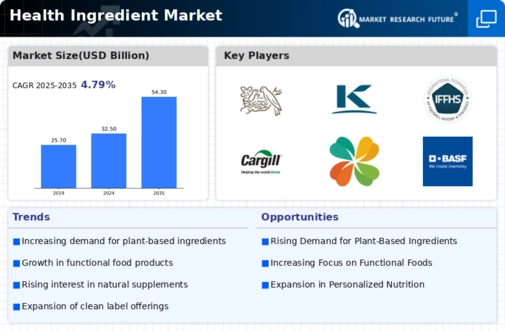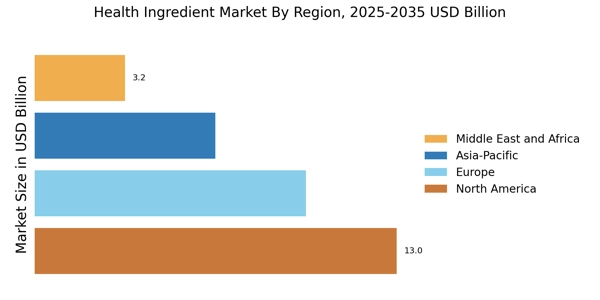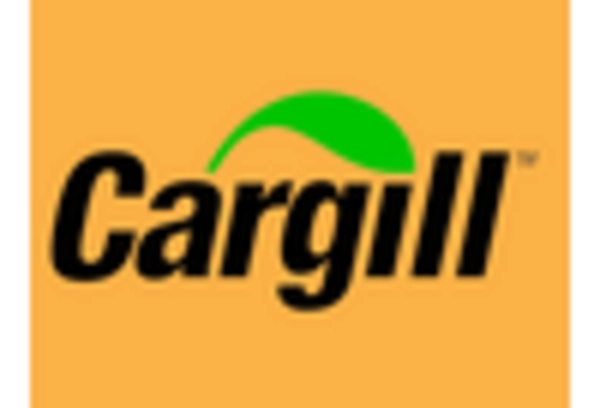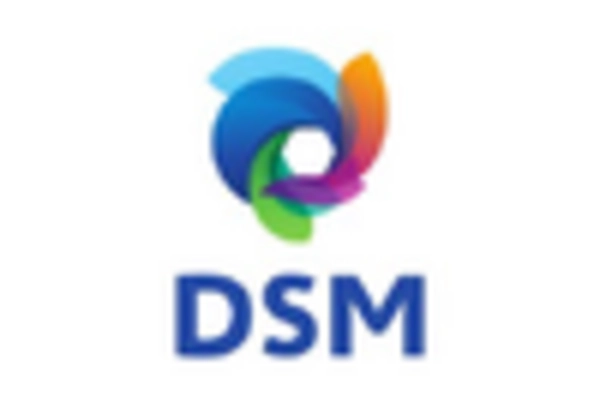Increasing Health Awareness
The rising awareness regarding health and wellness among consumers appears to be a pivotal driver for the Health Ingredient Market. As individuals become more informed about the benefits of nutrition and its impact on overall well-being, there is a noticeable shift towards healthier food choices. This trend is reflected in the growing demand for health ingredients that promote better health outcomes. According to recent data, the health ingredient sector is projected to grow at a compound annual growth rate of approximately 8% over the next five years. This growth is likely fueled by consumers seeking products that align with their health goals, thereby driving innovation and expansion within the Health Ingredient Market.
Rise of Personalized Nutrition
The rise of personalized nutrition is reshaping the landscape of the Health Ingredient Market. Consumers are increasingly seeking tailored dietary solutions that cater to their individual health needs and preferences. This trend is supported by advancements in genetic testing and data analytics, which allow for more precise recommendations regarding health ingredients. As a result, companies are developing products that align with specific health goals, such as weight management or enhanced immunity. The personalized nutrition segment is projected to grow significantly, with estimates indicating a potential market size of over 50 billion by 2026. This shift towards customization is likely to drive innovation and competition within the Health Ingredient Market.
Sustainability and Ethical Sourcing
Sustainability and ethical sourcing are becoming paramount considerations for consumers in the Health Ingredient Market. As awareness of environmental issues grows, consumers are increasingly favoring products that are sustainably sourced and produced. This trend is prompting manufacturers to adopt more responsible practices, such as using organic ingredients and reducing carbon footprints. The demand for sustainably sourced health ingredients is expected to rise, with market analysts predicting a growth rate of around 7% annually in this segment. Companies that prioritize sustainability are likely to gain a competitive edge, as consumers are more inclined to support brands that align with their values. This focus on sustainability is poised to shape the future of the Health Ingredient Market.
Regulatory Support for Health Ingredients
Regulatory support for health ingredients is emerging as a crucial driver for the Health Ingredient Market. Governments and health organizations are increasingly recognizing the importance of nutrition in public health, leading to the establishment of guidelines and policies that promote the use of health-enhancing ingredients. This regulatory framework not only encourages manufacturers to innovate but also instills consumer confidence in health products. For instance, initiatives aimed at reducing sugar and salt in food products are likely to boost the demand for alternative health ingredients. As a result, the Health Ingredient Market is expected to benefit from a more favorable regulatory environment, potentially leading to a market expansion of around 10% in the coming years.
Technological Advancements in Food Processing
Technological advancements in food processing and ingredient formulation are significantly influencing the Health Ingredient Market. Innovations such as microencapsulation, fermentation, and extraction techniques are enhancing the efficacy and bioavailability of health ingredients. These technologies enable manufacturers to create products that not only meet consumer demands for health benefits but also improve taste and texture. The integration of technology in ingredient development is expected to propel the market forward, with estimates suggesting that the market could reach a valuation of over 200 billion by 2027. This evolution in processing techniques is likely to attract new players and foster competition within the Health Ingredient Market.


















Leave a Comment